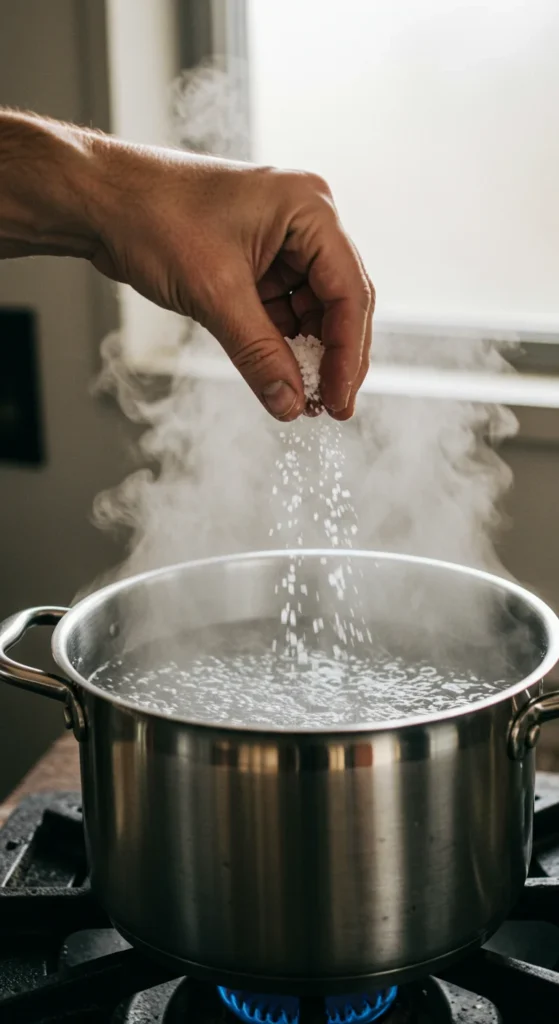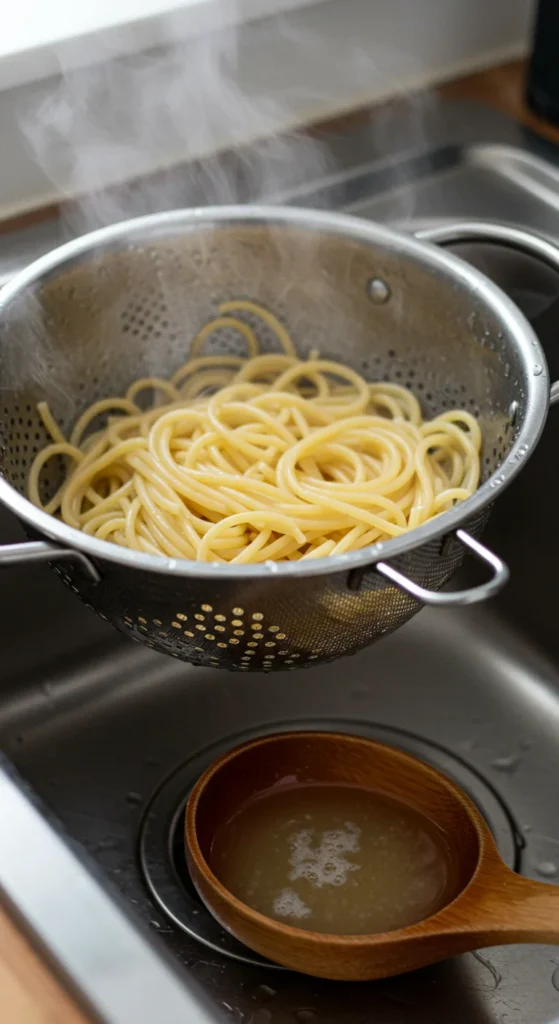There’s nothing worse than overcooked pasta — mushy, soggy, and lifeless. On the other hand, perfectly cooked pasta — al dente — is a whole different experience: firm yet tender, with just the right bite. It’s the kind of pasta that holds sauce beautifully, tastes incredible, and makes you feel like you’re eating in an Italian trattoria.
Cooking pasta al dente isn’t complicated, but it does require a bit of attention and a few key tricks. Once you know the method, you’ll never go back to guessing.

Step 1: Start with Plenty of Water
The secret to pasta that cooks evenly and doesn’t clump together starts with the pot — or more specifically, what’s in it.
For every pound (450 g) of pasta, use at least 4–6 quarts of water. This gives the noodles room to move freely and cook evenly.
- Use a large pot: Crowding pasta in a small pot makes it stick together.
- Salt the water: Add about 1–2 tablespoons of salt once the water starts boiling. It should taste like a mild ocean — this is your only chance to season the pasta from within.
- Skip the oil: Contrary to myth, adding oil makes the sauce slide off later. A vigorous stir does a better job of preventing sticking.

Step 2: Know Your Pasta and Timing
Different pasta shapes cook at different rates. The key is understanding what “al dente” really means: it’s Italian for “to the tooth,” meaning the pasta should be tender but still offer slight resistance when bitten.
Here’s a general guide:
- Thin pasta (angel hair, capellini): 3–4 minutes
- Medium pasta (spaghetti, linguine): 8–10 minutes
- Thick pasta (rigatoni, penne, fusilli): 10–12 minutes
- Fresh pasta: 2–4 minutes
Always check the cooking time on the package — then set your timer 1–2 minutes less than that. You’ll fine-tune it later.

Step 3: Stir Early and Often
When you first drop the pasta into boiling water, it releases starch, which can make it stick. The solution? Stir right away — and keep stirring for the first couple of minutes.
Use a long spoon or pasta fork to move the noodles around, separating them gently. Once the pasta starts to soften, you can stir occasionally, but those first few minutes are crucial.

Step 4: Taste, Don’t Just Time
Timers are helpful, but your taste buds are the best guide. Start tasting your pasta a minute or two before the box says it’s done.
You’re looking for:
- A firm but tender texture — not crunchy, but not mushy either
- A tiny white dot (the “core”) when you bite through — that’s the sign of al dente perfection
If you’re finishing your pasta in sauce (which you should!), it’s okay to stop boiling just before it’s fully cooked. The sauce will finish the job.
Step 5: Don’t Drain It All — Save the Gold!
Before you drain the pasta, scoop out a cup of the cooking water. That starchy, salty water is liquid gold — it helps your sauce cling to the noodles and creates a silky texture.
Then, drain the pasta quickly in a colander — but don’t rinse it! Rinsing washes away starch that helps sauce stick. The only time rinsing makes sense is if you’re making a cold pasta salad.

Step 6: Finish It in the Sauce
Here’s the ultimate chef secret: the best pasta isn’t just tossed with sauce — it’s finished in the sauce.
- Pour your cooked pasta into the pan with your simmering sauce.
- Add a splash of the reserved pasta water.
- Toss everything together over medium heat for 1–2 minutes until the pasta absorbs flavor and the sauce thickens slightly.
This step transforms a basic dish into something straight out of Italy — glossy, cohesive, and full of flavor.

Step 7: Serve Immediately (and the Right Way)
Pasta waits for no one — serve it as soon as it’s ready. Top with freshly grated Parmesan, a drizzle of olive oil, or a sprinkle of herbs like basil or parsley.
For an authentic finish, try:
- Olive oil drizzle for richness
- A twist of black pepper for aroma
- A small squeeze of lemon for brightness
And don’t forget to twirl that first perfect bite — firm, silky, and full of sauce.

Final Thoughts
Cooking pasta al dente is all about timing, tasting, and a little bit of love. Once you master it, you’ll never settle for soggy noodles again — just perfectly chewy pasta that feels like it came straight from an Italian kitchen.



Leave a Reply